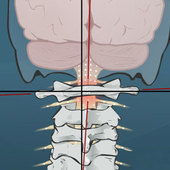
Whether for pleasure or work, many of us use airplanes to get to our destinations. A review of statistics from 2018 reveals that in Canada alone, just over 159 million passengers got on and off airplanes that year! Sitting in tight quarters for hours at a time is one thing, but add in sleeping in different beds, hauling heavy bags around, and having a different daily routine results in many people returning with a sore neck and back.
While most airplane seats are not designed with the ergonomics of your spine in mind, there are a few things you can do that might make your next flight a little more comfortable:
Tip 1: Watch your weight!
Carry-on luggage may be a time saver and ensures you won’t end up at your destination missing a suitcase, but it can come with a risk: wrestling bags into the overhead compartment of a plane can be difficult and physically straining. It is important to pack both smartly and efficiently. Carefully think through everything you are bringing to avoid unnecessary items or duplicates, and keep your carry-on to an appropriate weight. If you are short-statured, or have a known shoulder injury or concerns, it is perfectly acceptable to ask a flight attendant or someone in the vicinity to assist you with your carry-on stowage.
Tip 2: How much can you lift?
If you do check bags, be mindful while lifting them in and out of the car/trunk, onto the luggage belt, and off the baggage carousel when you arrive at your destination. Most people will try to maximize their packing by filling their suitcase right to the allowed limit, but just because you have the available weight or space doesn’t mean you need to use it! Carting around a huge 50-pound suitcase can be hard on the spine and extremities, and it can also be a struggle to lift that much weight on and off ramps and carousels.
Tip 3: Keep moving!
What’s the rush? Many people find a seat close to the departure gate and sit for hours before getting on the plane. Utilize the time before boarding to walk around the airport or do some gentle stretching which will help make you more comfortable both during and after your flight. While it is ideal to get up frequently and walk the aisles during your flight, this is not always possible due to beverage carts or a sleeping seat-mate. But, if you get the opportunity to get up and stretch your legs, take it – your body will thank you!
Tip 4: Love your legs!
When flights are longer than 3 hours, compression socks can be your best friend. These socks help reduce leg and ankle swelling, decrease discomfort in the lower legs, and have been shown to lower the risk of deep vein thrombosis even in individuals with no signs of symptoms. And these don’t have to be your grandmother’s beige compression stockings! Many companies are now making fun, stylish compression socks for all members of the family.
Another helpful tip to prevent swelling and pain is to do ankle exercises at your seat. Simply tracing the alphabet with each foot every hour can help increase circulation and help you deplane with more spring in your step.
Tip 5: Support your neck!
Sleeping on airplanes can be helpful and sometimes necessary, especially when crossing time zones. However, falling asleep with no neck support can create a simulated whiplash-type injury. There are many different travel pillows available, the most common being the traditional U-shaped neck pillow. With this style, turn the pillow ‘backwards’ so that the opening faces the seat; this prevents your head from falling forward, and the back of the pillow won’t be awkwardly pushing your head forward in the seat.
Tip 6: Land safely
When the airplane is landing, take care to be facing forward and brace your head gently against the back of your seat. Landings can be rough and the braking quite aggressive, so it is best to ensure your neck isn’t rotated and has some support.
Tip 7: Drink!
Finally… HYDRATE! Dry air, salty foods, and alcoholic beverages can all contribute to significant dehydration, as does the heavily climate-controlled environment. Did you know that on a 10-hour flight, people will lose on average over 1.5 L of water? Drink at least two glasses of water every hour of flight, and if you plan on enjoying an adult beverage, add an extra glass of water for each alcoholic beverage consumed. Bringing your own water bottle is the easiest way to stay hydrated, and most flight attendants are happy to keep your bottle topped off during the flight. Dehydration can lead to the amplification of jet-lag, water retention (hello swollen ankles!), skin dryness, and general malaise. It may also increase your susceptibility to bugs while travelling, and no one wants to spend their holidays stuck in bed fighting a cold.
These are some easy, basic tips for airplane travel that will hopefully ensure you arrive with your spine in line, and that you will enjoy your trip without the concern of neck or back pain and body discomfort. It is also recommended that you get checked before travel so that your spine is balanced and well prepared for the inevitable stresses it will face. If you have been travelling and feel like your spine might need a tune-up, contact us for an appointment today!

Dr. Mylène Hopf
NUCCA Chiropractic
The Vital Posture™ Clinic
Calgary, Canada



